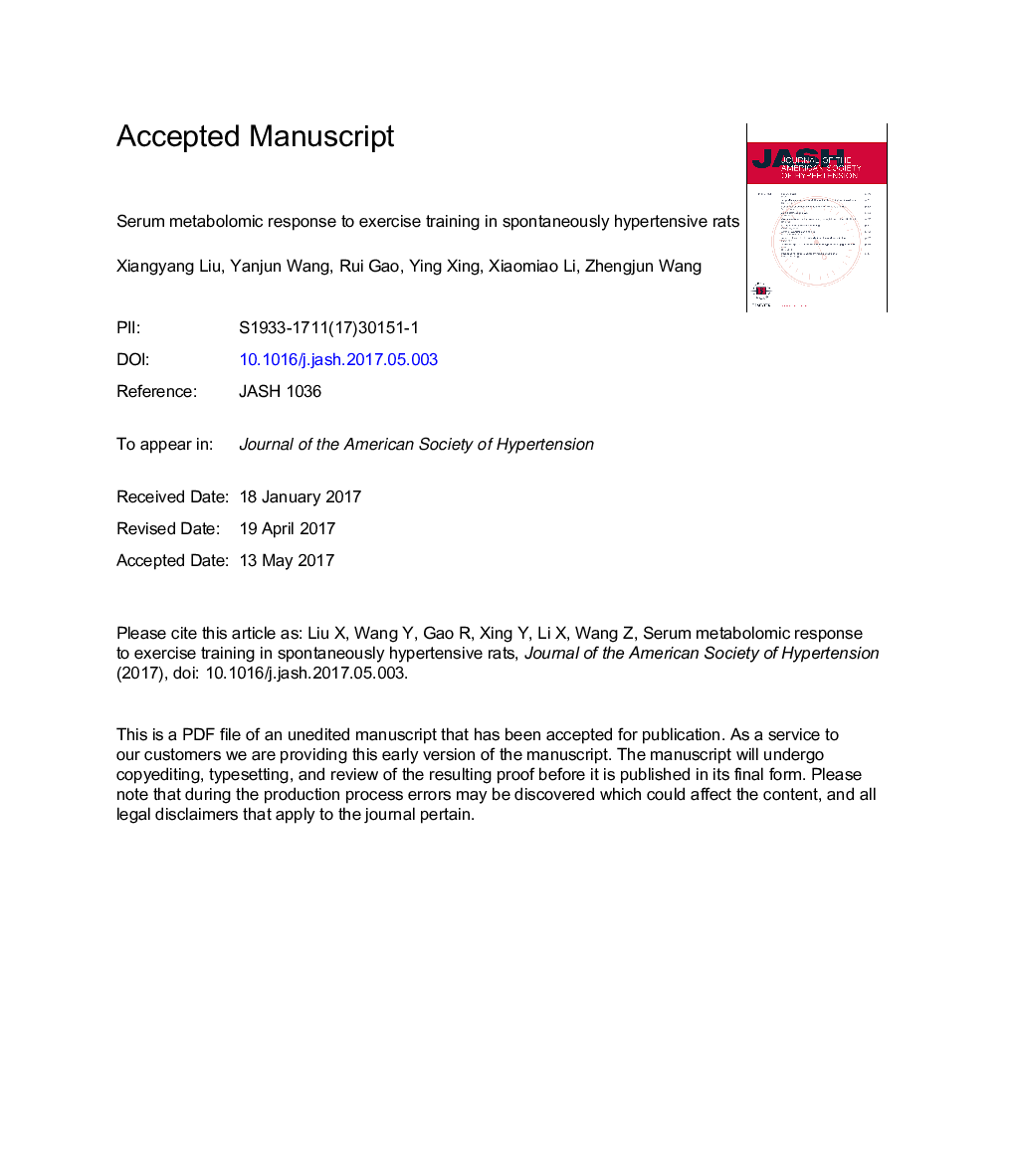| Article ID | Journal | Published Year | Pages | File Type |
|---|---|---|---|---|
| 5613634 | Journal of the American Society of Hypertension | 2017 | 30 Pages |
Abstract
Chronic aerobic exercise training exhibits blood pressure protective effects, but the mechanism in metabolic level remains largely unclear. This study aims to investigate the effect of exercise training from serum metabolic profiles on the development of hypertension in spontaneously hypertensive rats (SHRs). Exercise training was performed, and the serum metabolites were measured by integrating gas chromatography-mass spectrometer and correlation-based network analysis. After a period of 6 weeks of chronic aerobic exercise training, systolic blood pressure was significant lower in the exercise training group (SHR + EX) rats than the control group (SHR). Principal component analysis indicated a clearly separation of metabolomic profiles between SHR + EX and SHR. Nineteen of 63 metabolites in serum were identified (P < .05, variable importance in projections > 1, false discovery rate < 0.1), including fatty acids, amino acids, and others. Lower levels of six fatty acids were observed in SHR + EX. Besides, pathway analysis indicated a significant alteration of fatty acid metabolism. The correlation-based (Pearson correlation coefficient > 0.83) network of serum metabolites revealed a decreased correlation linkage of SHR + EX than SHR rats. Higher activities of hexokinase, citrate synthase, aspartate aminotransferase, and alanine aminotransferase were detected in liver, left ventricle, and skeletal muscle of SHR + EX groups. In summary, these findings provided essential biochemistry information about the metabolic alteration to exercise training in SHR, which may in part explain the protective effect of exercise in hypertensive individuals.
Related Topics
Life Sciences
Neuroscience
Endocrine and Autonomic Systems
Authors
Xiangyang MD, Yanjun MD, Rui MD, Ying MD, PhD, Xiaomiao MD, Zhengjun PhD,
